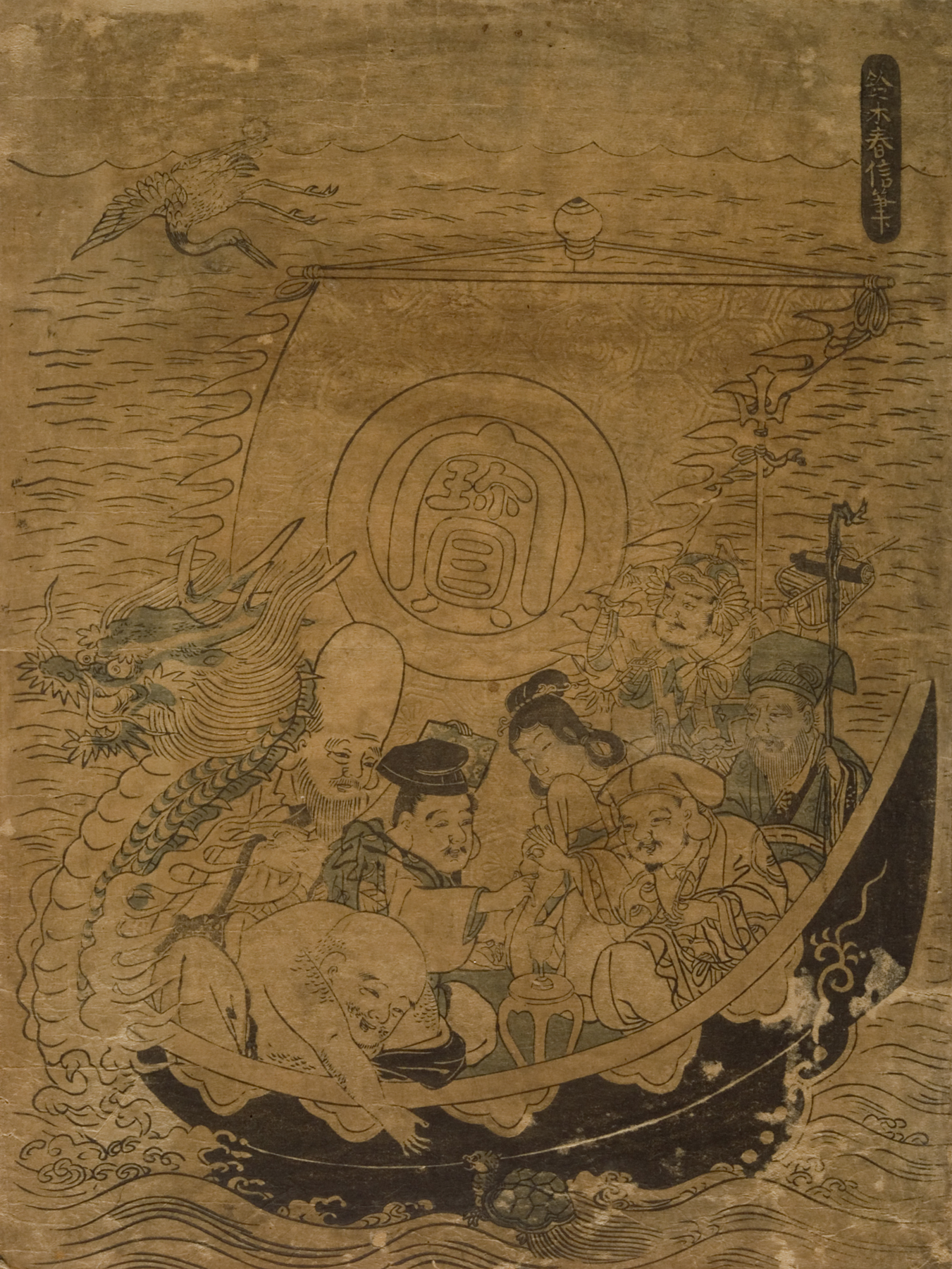The Seven Lucky Gods in a Treasure Ship, Suzuki Harunobu
Artwork Overview
Suzuki Harunobu, artist
circa 1725–1770
The Seven Lucky Gods in a Treasure Ship,
late 1760s, Edo period (1600–1868)
Where object was made: Japan
Material/technique: color woodcut
Dimensions:
Image Dimensions Height/Width (Height x Width): 282 x 212 mm
Image Dimensions Height/Width (Height x Width): 11 1/8 x 8 3/8 in
Sheet/Paper Dimensions (Height x Width): 282 x 212 mm
Sheet/Paper Dimensions (Height x Width): 11 1/8 x 8 3/8 in
Mat Dimensions (Height x Width): 19 x 14 in
Image Dimensions Height/Width (Height x Width): 282 x 212 mm
Image Dimensions Height/Width (Height x Width): 11 1/8 x 8 3/8 in
Sheet/Paper Dimensions (Height x Width): 282 x 212 mm
Sheet/Paper Dimensions (Height x Width): 11 1/8 x 8 3/8 in
Mat Dimensions (Height x Width): 19 x 14 in
Credit line: William Bridges Thayer Memorial
Accession number: 1928.7577
Not on display
If you wish to reproduce this image, please submit an image request

